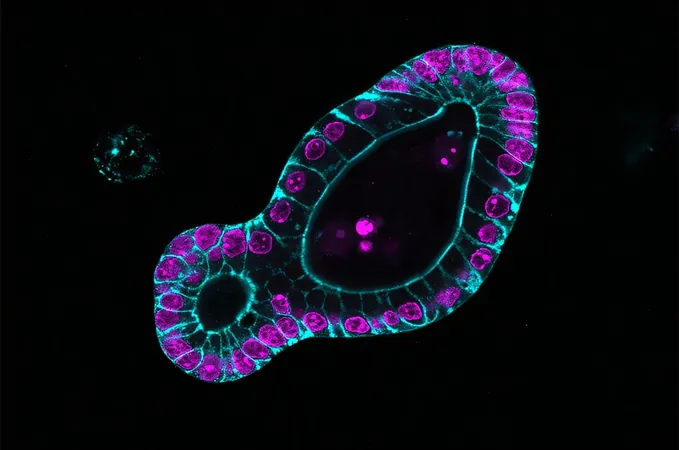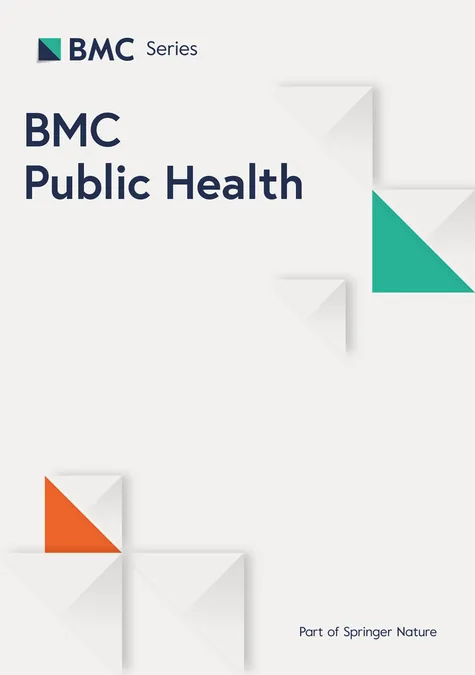
Unlocking the Secrets of Gut Regeneration: Tissue Mechanics Drive Organoid Formation
2025-03-25
Author: Mei
Introduction
In a groundbreaking study recently published in *Nature Physics*, researchers from the FMI (Friedrich Miescher Institute) have unveiled the intricate mechanics behind the formation of intestinal organoids, specifically focusing on crypts—tiny pockets that act as homes to stem cells critical for gut regeneration and stability.
Importance of Intestinal Organoids
Lab-grown intestinal organoids are a game changer, as they closely mimic the natural structures of the gut, including the essential crypts. However, the specific mechanical processes that lead to the formation of these crypts have puzzled scientists for years. This innovative research aims to bridge that knowledge gap by linking mechanical forces directly with cellular responses that influence the shape of the tissue.
Research Findings
Led by the Liberali lab in collaboration with the Institute of Science and Technology Austria, the team developed a model that clarifies the relationship between cell volume, lumen dynamics (the central cavity within the organoid), and the mechanical forces at play. The study reveals that as the volume of the intestinal lumen decreases, there is not only a change in tissue shape but also a shift in tension across different layers of cells. This dynamic interaction is critical; when the lumen shrinks, it minimizes the energy required to bend the tissue, significantly intensifying the differences in tension and driving the formation of crypts.
Quote from Dr. Liberali
Dr. Liberali explained, "As the organoid's lumen volume decreases, the tissue bends, and crypts emerge." This assertion is based on their experiments, where artificially altering lumen volume in early-stage organoids was shown to reopen developing crypts, while mature crypt structures remained unaffected, highlighting the importance of timing in the development process.
Pressure Dynamics
In a fascinating twist, researchers found that the pressure within the lumen acts like a long-range signaling system that orchestrates the synchronized formation of crypts throughout the organoid. This means that variations in fluid pressure can prompt coordinated responses in multiple crypts, ensuring a harmonious development as the organoid matures.
Implications of the Research
This crucial insight into the mechanics of organoid formation has far-reaching implications—not only could it revolutionize approaches in tissue engineering and regenerative medicine, but it may also provide key understandings applicable to other tissue models, paving the way for advancements in treating gut-related diseases.
Conclusion
As we continue to unlock the secrets of organoid development, the potential to harness this knowledge for therapeutic innovations becomes increasingly tantalizing. Stay tuned as this research promises to reshape our understanding of gut biology and regenerative therapies!



 Brasil (PT)
Brasil (PT)
 Canada (EN)
Canada (EN)
 Chile (ES)
Chile (ES)
 Česko (CS)
Česko (CS)
 대한민국 (KO)
대한민국 (KO)
 España (ES)
España (ES)
 France (FR)
France (FR)
 Hong Kong (EN)
Hong Kong (EN)
 Italia (IT)
Italia (IT)
 日本 (JA)
日本 (JA)
 Magyarország (HU)
Magyarország (HU)
 Norge (NO)
Norge (NO)
 Polska (PL)
Polska (PL)
 Schweiz (DE)
Schweiz (DE)
 Singapore (EN)
Singapore (EN)
 Sverige (SV)
Sverige (SV)
 Suomi (FI)
Suomi (FI)
 Türkiye (TR)
Türkiye (TR)
 الإمارات العربية المتحدة (AR)
الإمارات العربية المتحدة (AR)